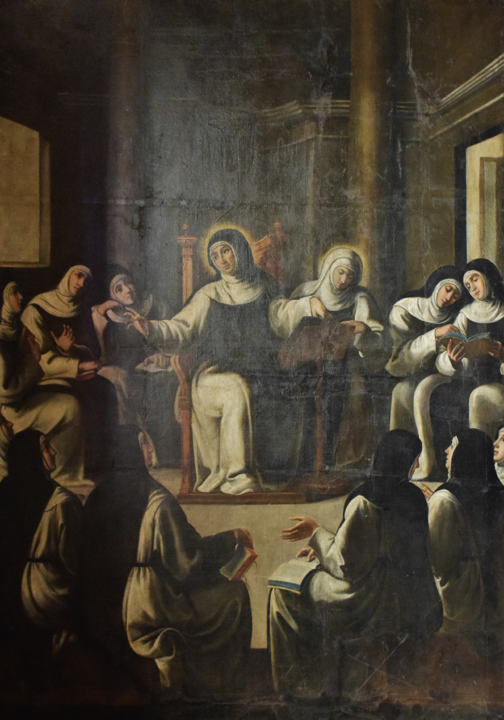
St. Paula
Born: c. 347 CE
Died: c. 404 CE
Feast day: January 26
Patron saint of: widows, Order of Saint Jerome, monks and nuns
Like the fabled yuppies of the ’80s, the upper-crust citizens of Rome had little trouble spending their money and lots of trouble finding wise things to spend it on. Young women, for example, spent fortunes on elaborate makeup, silken clothes, golden shoes, colossal jewels, and enslaved people to tote them around the city on litters. Many of the smart set blazed a trail for Liz Taylor by marrying eight and ten husbands apiece.
When Saint Paula lost her wealthy husband at the ripe old age of 30, this lifestyle must have been a tempting way to regain some zest for life.
Saint Jerome, who would one day become her friend and teacher, recalls seeing her, soon after she arrived in Rome, surrounded by enslaved people and resplendent in her beautiful makeup and sumptuous clothes.
But Paula’s friend Marcella, another wealthy Roman widow, urged her to find solace of a different sort: she invited Paula to become a Christian and to join the community of women who gathered at Marcella’s villa to pursue a life of prayer and charity.
Paula soon found satisfying ways to spend her money. She began wearing a plain brown tunic, and began giving away an alarming amount of her money to those in need. “I said she must take care,” wrote Jerome, “or one day she might find it impossible to distribute the alms she was now giving so freely, and I added a lot more arguments of the same kind. . . . She needed very few words to demolish them.”
Jerome, who had come to Rome as the pope’s new secretary, accepted Marcella’s invitation to deliver a few lectures on scripture to the community. He soon saw that these brainy, well-educated women would welcome a true intellectual challenge. He urged them to learn Greek and Hebrew, the original languages of the Bible, that they might help him wrestle with his task of translating the scripture into Latin.
In Paula and the other women, writes Jerome’s biographer Jean Steinmann, Jerome found “an audience who realized the necessity of devoting an immense intellectual labor to the Bible.” Paula had finally found her calling, and it was one where her wealth would come in handy.
When Jerome asked her to join him when he moved to the Holy Land, Paula and her daughter Eustochium agreed. They settled in Bethlehem, where Paula used her funds to establish a convent, which she oversaw, and to build a monastery for Jerome.
She footed the bill for the books and ancient manuscripts that Jerome needed to pursue his mammoth translation. She herself learned to recite all the psalms in Hebrew, and in her convent she began the practice of hand-copying scripture. She also built a hospice to house pilgrims, orphans, and the poor and elderly.
“Jerome would read his translations to her,” writes biographer Nancy Hardesty, “and she would criticize, question, and encourage further research where she found his work faulty.” Jerome flew in the face of custom by dedicating many of his translations and commentaries to Paula and her daughter.
Because of her unwavering generosity, Paula died a poor woman. But her name and her work lived on in the priceless translation of the Bible that served the church for centuries
Originally published in the November/December 1992 issue of Salt magazine, ©Claretian Publications.
Image: kenward, CC BY 2.0, via Wikimedia Commons








